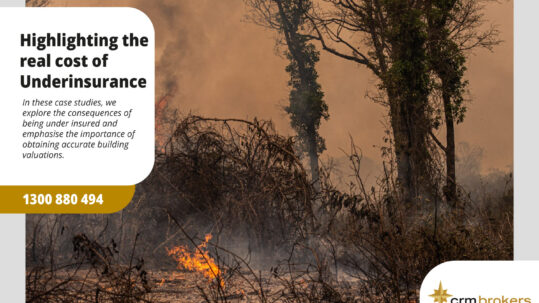
01 Dec What a La Nina event means for property and business insurance
What a La Niña event means for property and business insurance
The Bureau of Meteorology (BOM) recently declared Australia is on La Niña watch, which means we may be in for another extremely wet summer.
Australia is well known for its extreme weather conditions. Bushfires. Floods. Cyclones. Storms. In severe cases, this can stem from a La Niña or El Niño event, which are both part of the global climate system. La Niña is typically associated with above-average rainfall for Australia, particularly across eastern, central and northern regions.
It’s caused by a number of factors, including changes in the surface temperature of the tropical Pacific Ocean. As the BOM observes “the cooler ocean joining forces with the atmosphere is the cause of the changes in global weather patterns.” This may result in torrential rain, floods, cyclones and storms, all of which can have a big impact for communities and businesses.
Research by insurer Allianz suggests Australians are woefully underprepared. Half of us (51 per cent) don’t secure doors, window, or roof coverings when a storm is coming and just over a third (36 per cent) would prepare an emergency food and first aid kit
Steadfast Group broker technical manager Michael White says the biggest problem with a heavy rainfall event is water flooding commercial buildings.
“Take all the mitigation steps you can to reduce this risk. Check your building for any holes where water could get in and check your downpipes are not blocked. Get a roofing specialist or a builder to inspect your roof, don’t get up their yourself, and make sure it’s as watertight as it can be as many roofs are well past their used by date. If there are any defects, get them repaired. If the roof is very old it may need to be replaced, especially if it’s made from asbestos, which tends to be brittle and prone to damage. The final step in your risk mitigation process should be to ensure your windows are properly sealed.”
How you can prepare
- Maintain roofs and guttering, and ensure your buildings are watertight. Reducing the likelihood of damage prior to inspection is important.
- Place stock and electrical equipment above the recommended level to avoid water damage. Install a sump pump in the basement.
- Review your cover to make sure you have the right – and adequate – insurance in place.
- Assess your flood exposure.
- Take a close look at your policy exclusions, especially flood.
- Consider business interruption – are you covered?
- Will disruption to your suppliers affect your business?
- Get a building inspection and follow the recommendations.
- Check your drainage. Your council and waterways should be keeping channels clear.
- Physically prepare your home and business for severe weather.
- Develop an evacuation plan for you, your employees and your family
Stay Informed – Connect with us on LinkedIn
Important Notice
This article provides information rather than financial product or other advice. The content of this article, including any information contained in it, has been prepared without taking into account your objectives, financial situation or needs. You should consider the appropriateness of the information, taking these matters into account, before you act on any information. In particular, you should review the product disclosure statement for any product that the information relates to it before acquiring the product.
Information is current as at the date the article is written as specified within it but is subject to change. CRM Brokers make no representation as to the accuracy or completeness of the information. Various third parties have contributed to the production of this content. All information is subject to copyright and may not be reproduced without the prior written consent of CRM Brokers.
Strata Insurance Insights: The Real Cost of Underinsurance
Simply put, underinsurance occurs when the sums insured are not sufficient to co...
11 April, 2024Strata Insurance Insights: Building Valuations
While securing appropriate insurance coverage is fundamental for strata property...
14 March, 2024The Alarming Rise of Business Email Compromise and the Vital Role of Cyber Insurance
In today’s rapidly evolving cyber threat landscape, cybercriminals are con...
27 February, 2024Navigating High-Risk Tenancies and Property Insurance
When it comes to insuring properties with commercial tenants, regardless of whet...
13 February, 2024





